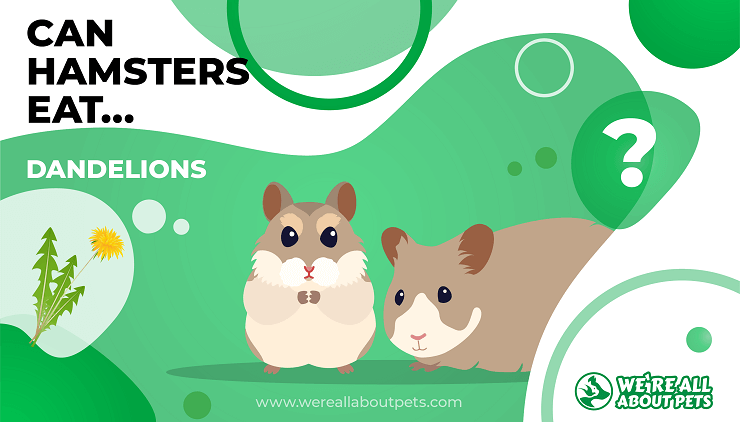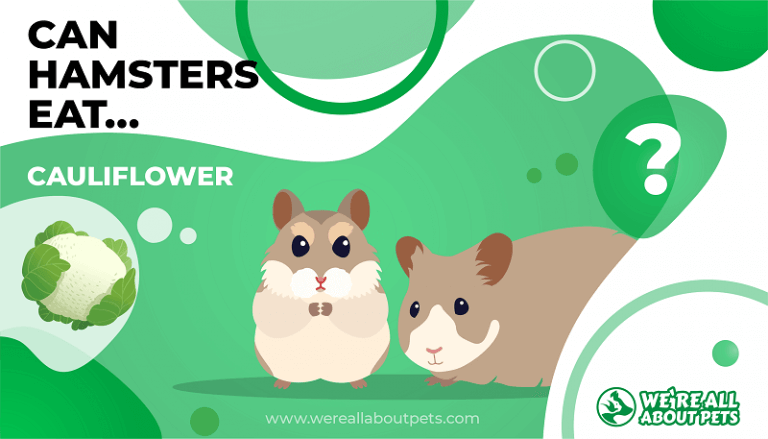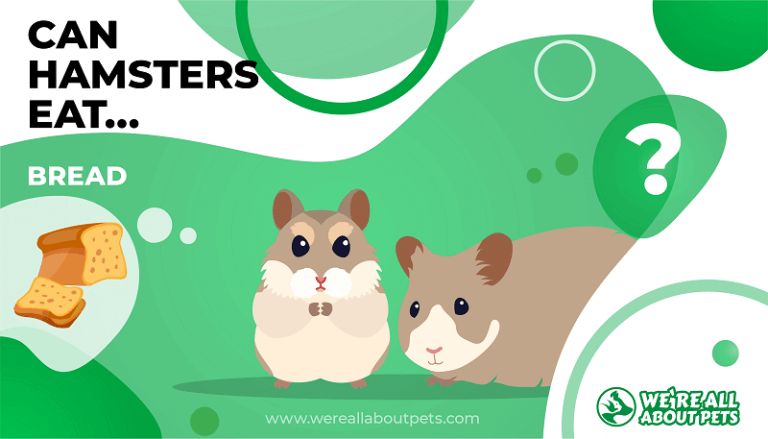Can Hamsters Eat Kale?
This page contains affiliate links. We may earn money or products from the companies mentioned in this post through our independently chosen links, which earn us a commission. Learn More
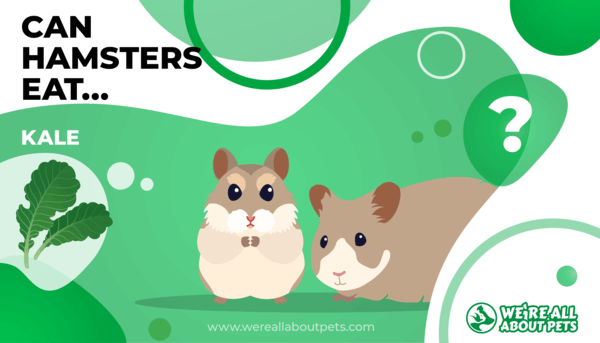
For many humans, kale is the health food of the moment. It’s sturdy enough to stand up to use in recipes, it makes a good low-carb substitute for wraps, and it’s pretty darn good in smoothies, too!
If you have some kale on hand and you’d like to share with your hamster, you’re probably wondering if it’s OK to give kale to a hamster – and if so, how much you can offer.
Here’s the short answer: “Yes, hamsters can have kale, but only a little at a time, and not all that often.”
Read on for our complete guide to kale for hamsters.
Kale Nutrition Stats
If you’re a fan of kale, you’re in luck: You can eat lots of it without worrying too much about how it will impact your waistline.
If you eat an entire cup of chopped kale, you’ll get about:
- 34 calories
- 7 g carbohydrates
- 5 g fiber
- 47 g fat
- 2 g protein
Kale Nutritional Facts

There’s no wonder kale is a so-called “superfood;” its’ reputation is well-earned!
That same cup of chopped kale provides approximately:
- 4 mg vitamin C
- 10302 iu vitamin A
- 299 mg potassium
- 1 mg iron
- 4 mcg folate
- 547 mcg vitamin K
- 5 mg calcium
- 8 mg magnesium
- 5 mg phosphorus
Can Hamsters Have Kale?
Yes, but you’ll want to be careful about how much you offer, and you’ll want to take extra care when washing the leaves before giving your hamster their share! Also, you’ll want to offer only the tender outer portion of the kale leaf, not the bitter, watery inner section or stem.
Is Kale Good For Hamsters?
Kale is a member of the same family as some other highly nutritious vegetables including broccoli, broccolini, cauliflower, and cabbage. It’s a really nutritious plant and there’s no doubt that the vitamins, minerals, and antioxidants in kale are good for your hamster.
Do Hamsters Like Kale?
Your pet might or might not like the way kale tastes. The best way to determine if your hamster likes kale is to offer a very tiny nibble and see if they eat it or if they leave it alone.
How Much Kale Can A Hamster Eat?
You might be surprised to hear this: It’s possible for a hamster to eat too much kale! You definitely don’t want that to happen.
Here’s how much kale a to feed your hamster:
| Age | Amount |
| Baby hamster | None |
| Adult hamster | 1 piece of kale leaf, outer edge only, the size of your hamster’s head |
This sounds like barely any kale at all, and you’re right, it is a very small portion. Kale is fairly acidic and too much of it can make your hamster sick. You don’t want to give them an upset tummy – and after all, snacks are supposed to be fun!
If your hamster already eats fresh foods, you can offer them a full portion of kale and let them enjoy it. Be sure to watch for signs of diarrhea or an upset tummy for the next 12 hours or so.
If everything is normal and your hamster likes kale, then you can add this nutritious veggie to your pet’s weekly treat rotation.
If your hamster is a new arrival to your family, then you’ll want to give them a milder veggie to start out with and introduce kale later. You can offer a tiny bit of spinach or cucumber every other day for about a week, then every day for the next week.
This can be swapped out for a tiny portion of kale on one day of the third week.
How Often Can A Hamster Eat Kale?
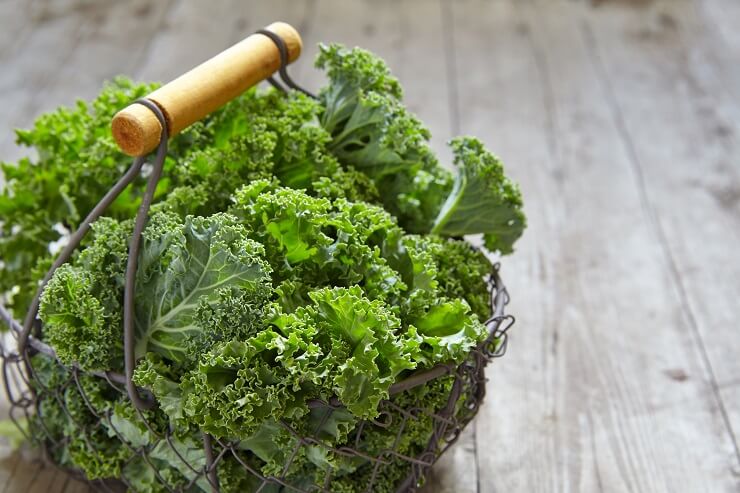
Even if your hamster really, really likes kale, you shouldn’t give it to them too often. Once or twice per week is plenty, and not on the same day as other acidic foods such as cilantro.
Always watch your pet closely after feeding kale and if you notice signs of diarrhea, stop giving them kale and go back to dry hamster pellets only until the problem has been resolved. When you go back to fresh treats, give them something gentler like cabbage or spinach.
Not all hamsters do well with kale so a careful approach is best!
The Correct Diet Is Important
People are often surprised to learn that hamsters are omnivores! In the wild, these cuddly critters eat all kinds of insects and worms in addition to plants and seeds. Kale isn’t really on the menu as it simply isn’t available.
So, what should you be feeding your hamster each day? Here’s the scoop:
- A balanced, complete hamster pellet; check the package for the correct serving size and stick to it.
- Fresh Timothy hay; great for your hamster’s teeth and fun for little projects like nests and tunnels. Give your hamster an unlimited amount of hay to nibble and play with.
- Dried mealworms: Believe it or not, these are very exciting treats for your hamster. They’re optional and only one or two at a time, a few times per week is plenty.
- Birdseed: Another nice but not necessary snack that your hamster will appreciate. There’s a bit of healthy fat in the seeds and they’re fun for your hamster to hide for later enjoyment.
- Tiny bits of fruit and vegetables: Just enough for a little nibble, and only enough for your hamster to eat all at once. Since hamsters hoard extra food, you’ll want to clear away any leftovers. This prevents spoilage and mold that could harm your pet.
- Clean, fresh water: Your hamster won’t drink a lot but you should remember to rinse and refill their drinking bottle once a day.
Last but not least, let’s talk dental care. Your hamster needs to nibble constantly as hamster teeth never stop growing and all that gnawing prevents painful overgrowth.
We suggest hamster toys and other items like hay cubes, coconut shell, unbleached loofah, or untreated softwood. At least one of these or another safe alternative should be available at all times.
What Are Other Healthy Alternatives To Kale In A Hamster’s Diet?
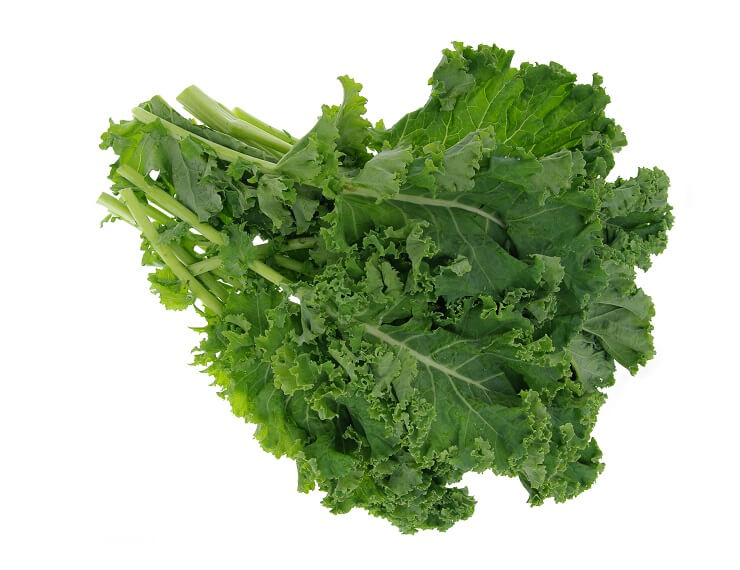
Since your hamster can’t have much kale, it makes sense to look for other natural snacks.
Try some of these hamster-approved treats on for size:
- asparagus
- baby corn
- artichoke
- sweet corn
- cabbage
- basil
- cilantro
- mint
- parsley
- carrot
- carrot tops
- romaine
- potato (cooked only)
- beets
- beet tops
- sprouts
- arugula
- swiss chard
- spinach
- endive
- escarole
- butter lettuce
- bibb lettuce
- rocket
- buttercrunch lettuce
- green beans
- cucumber
- summer squash
- winter squash
- pumpkin
- bell pepper
- zucchini
- celery
- parsnip
- sweet potato
- tomato
- broccoli
- broccolini
- cauliflower
- okra
- bok choy
- yu choy
- watercress
These (and lots of other veggies and fruits) can be great for your hamster.
And let’s face it: It’s a lot of fun to watch your pet nibbling on those special treats!
Giving your hamster kale (in tiny amounts!) is a nice way to let them enjoy something different while adding a little more nutrition to their regular diet.
Frequently Asked Questions
Is kale safe for hamsters?
Yes but only in small amounts, and only once or twice per week. Even though kale is good for you, it’s acidic – and this means that it’s pretty easy for hamsters to overdo it.
Can kale make my hamster sick?
Kale can give your hamster diarrhea, bloating, and a general upset tummy, particularly if they aren’t accustomed to fresh foods. Watch your hamster’s reaction when you offer a very small amount of kale and if you notice anything out of the ordinary, don’t give it to them again. Even though some hamsters like kale and can enjoy it occasionally, others simply can’t stomach it.






